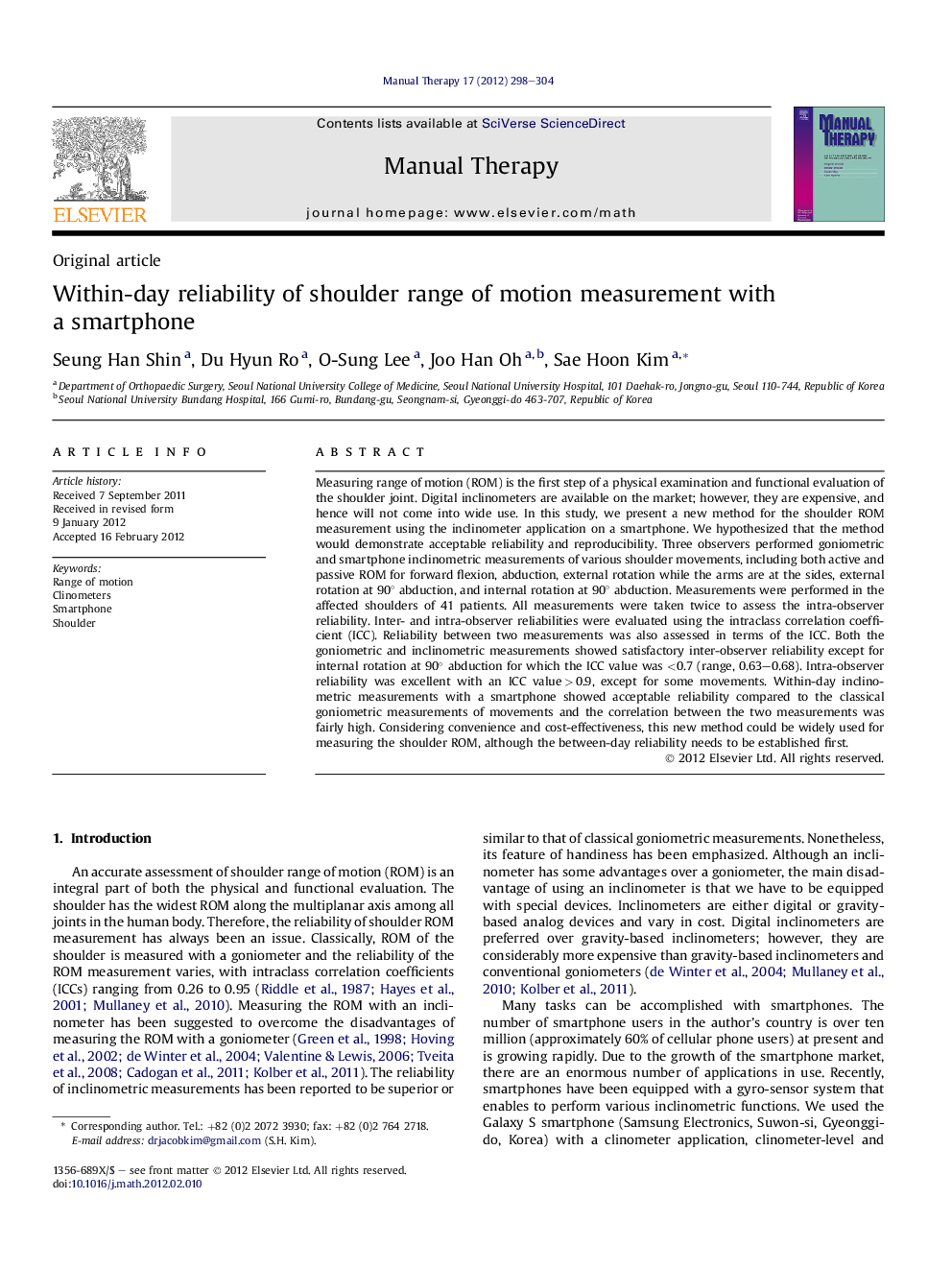| Article ID | Journal | Published Year | Pages | File Type |
|---|---|---|---|---|
| 2625366 | Manual Therapy | 2012 | 7 Pages |
Measuring range of motion (ROM) is the first step of a physical examination and functional evaluation of the shoulder joint. Digital inclinometers are available on the market; however, they are expensive, and hence will not come into wide use. In this study, we present a new method for the shoulder ROM measurement using the inclinometer application on a smartphone. We hypothesized that the method would demonstrate acceptable reliability and reproducibility. Three observers performed goniometric and smartphone inclinometric measurements of various shoulder movements, including both active and passive ROM for forward flexion, abduction, external rotation while the arms are at the sides, external rotation at 90° abduction, and internal rotation at 90° abduction. Measurements were performed in the affected shoulders of 41 patients. All measurements were taken twice to assess the intra-observer reliability. Inter- and intra-observer reliabilities were evaluated using the intraclass correlation coefficient (ICC). Reliability between two measurements was also assessed in terms of the ICC. Both the goniometric and inclinometric measurements showed satisfactory inter-observer reliability except for internal rotation at 90° abduction for which the ICC value was <0.7 (range, 0.63–0.68). Intra-observer reliability was excellent with an ICC value > 0.9, except for some movements. Within-day inclinometric measurements with a smartphone showed acceptable reliability compared to the classical goniometric measurements of movements and the correlation between the two measurements was fairly high. Considering convenience and cost-effectiveness, this new method could be widely used for measuring the shoulder ROM, although the between-day reliability needs to be established first.
